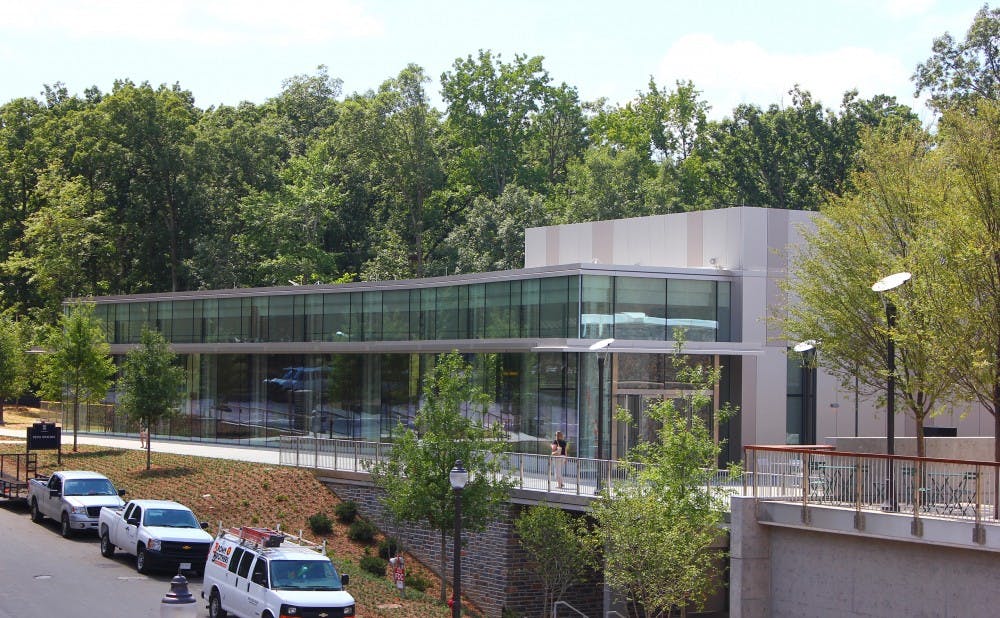Although it is still only serving 75 percent of its target total meals, Penn Pavilion has seen 4 percent growth since January 2014.
Since its Fall 2013 opening, Penn has struggled to reach Duke Dining’s goal of serving 2,000 meals each day. It currently averages only 1,500 customers daily, a slight increase from last year, which Director of Dining Services Robert Coffey attributes to implementing suggestions from the Duke University Student Dining Advisory Committee and hosting special events.
“Penn is doing lots of exciting new menu programming that has been well received," Coffey said. "We have seen increased participation surrounding these new programs and have received positive feedback."
Chinmay Patwardhan, who graduated in December but still works on campus, agreed that the Pavilion has seen improvement.
“It’s gotten a lot better, and I think a lot of people would agree,” he said. “Before, it seemed like a giant space and no one was there, but that’s definitely changed.”
DUSDAC co-chair Brian Taylor, a junior, acknowledged that the Pavilion struggled when it first opened.
“A lot of students got a bad first impression, so now we’re trying to convince them that it’s changed and to give it a second try,” he said. “It’s an on-going process but we feel like we’ve really turned a corner after adjusting the staff and incorporating student feedback.”
As part of the ongoing improvements to Penn, Coffey noted that there is now a shake and ice cream vendor in Penn Pavilion. There are are also new kosher and halal options as well as expanded gluten-friendly, vegetarian and vegan choices on the menu.
DUSDAC co-chair Greg Lahood, a senior, attributed the improvement to special events hosted by the Pavilion such as outdoor tastings, Chef’s Chatter—in which students can talk with the chefs at the Pavilion—and Tea-Laxation, in which students learn how to make tea.
“We’ve seen an increase in business during the lunch hour,” LaHood noted. “Anytime I go in, it seems like there’s a lot more people, and a big part of this are these initiatives.”
Junior Lisa Guo said her main problem with the Pavilion is its weekend hours.
“The fact that it’s closed on Saturdays and only open from 4 p.m. to 8 p.m. on Sundays is just really inconvenient for me,” she said.
Lahood said that the Pavilion’s weekend hours are a common complaint.
“In the beginning, there was not enough weekend business to justify staying open on weekends, but it’s definitely something we could look into if business improves,” he said.
The Pavilion’s main goal now is boosting traffic during the breakfast and dinner hours, Taylor said.
Although the Pavilion is far from meeting its goal of 2,000 meals per day, Lahood sees no reason for concern.
“The focus needs to be on the people. I would rather the Pavilion serve 1,500 good meals than 2,000 and have quality suffer,” he said.
Coffey stressed that Duke Dining is working to keep improving the Pavilion.
“Duke Dining is committed to continually listening and reacting quickly to customer feedback to improve the dining experience,” he said.
Get The Chronicle straight to your inbox
Signup for our weekly newsletter. Cancel at any time.

